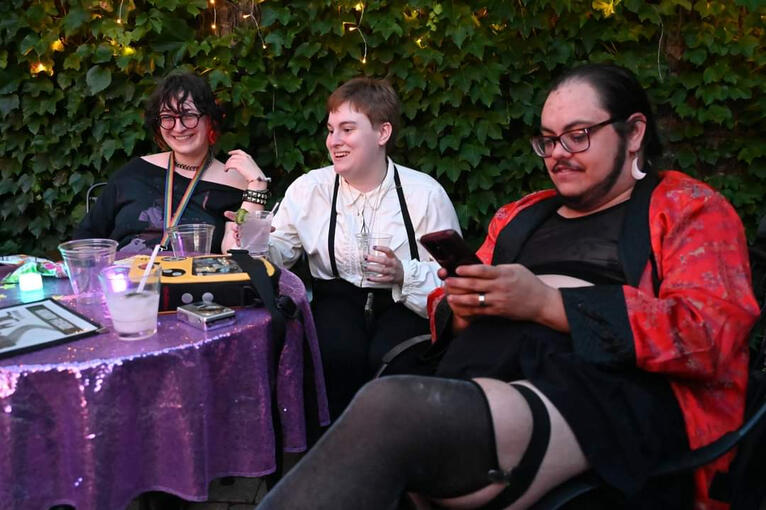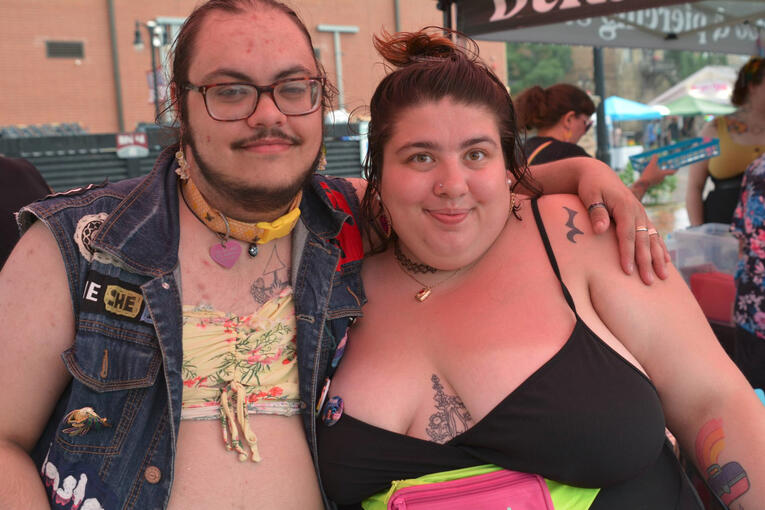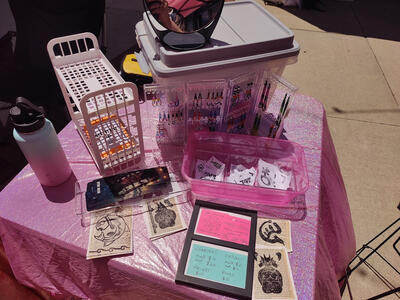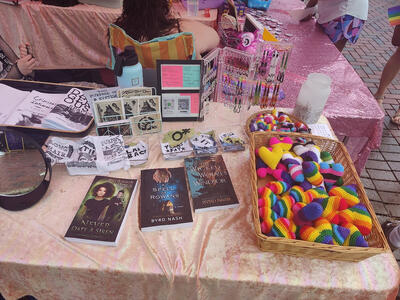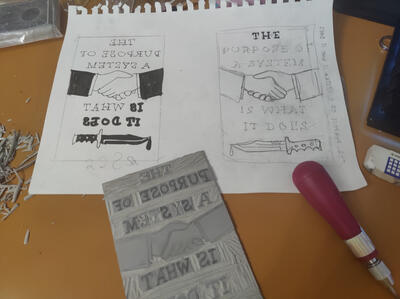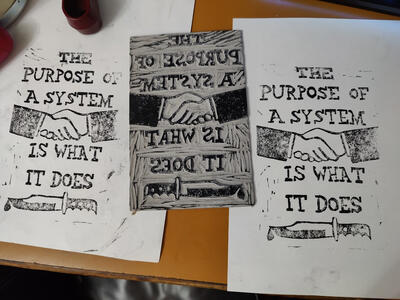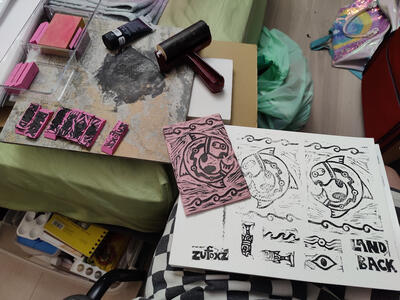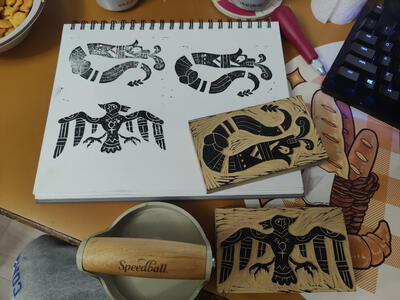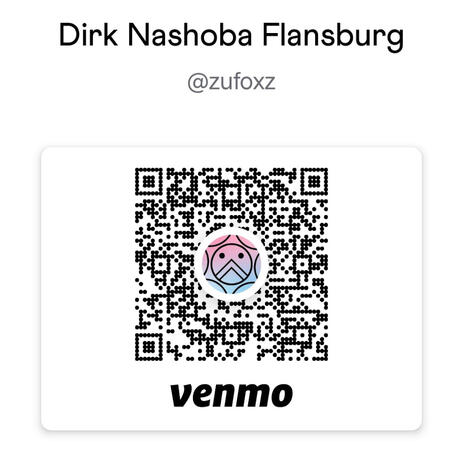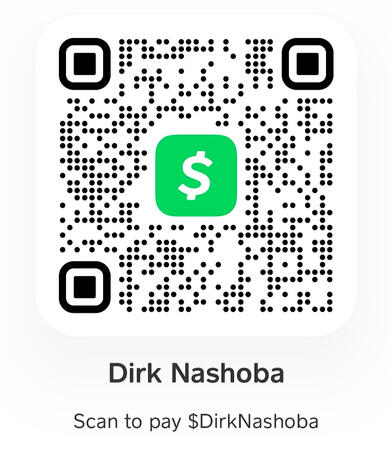
Insaktalhafa
Designs
Chickasaw two-spirit (shilombish toklo) making queer & native designs.
Shirts, patches, stickers, prints, zines, & more.
If you're interested in commissioning me or you want to collaborate, email me at [email protected]
Prices would start at $25 (USD) for digital designs and increase with complexity, with an additional flexible fee if you want it for a tattoo. If you want a physical item (blockcut on fabric, painting, etc) I would also charge the cost of materials.
About the artist
I am Dirk Nashoba Insaktalhafa, a two-spirited white Chickasaw. I grew up in Oklahoma and became more involved in the Chickasaw Nation and my heritage once I was a teenager. My grandma has now passed, but she was a big inspiration for me and she was proud of our Chickasaw heritage.Nashoba is my Chickasaw name, chosen when I transitioned and got my legal name change in honor of my heritage which I was now reconnecting with. Insaktalhafa I have been told by my grandma and other trusted sources was my family's Chickasaw house name. It translates to "scored, eroded [river] bank" or "their sloughing off riverbanks" and most likely referred to the Mississippi River, possibly near modern-day Memphis, TN.I studied philosophy and Native American studies at the University of Oklahoma, and am passionate about social justice, advocacy, harm reduction, cultural revitalization, indigenous futurism, and all manners of anticolonial/decolonial work & thought.
About the art
My art is inspired by experience and research in traditional Native American art, particularly of the nations in the Southeast and Southeastern Woodlands area, as this is where my nation is from. I design and draw all illustrations myself: these are not meant to be recreations of specific traditional illustrations, but rather are a revival of the traditional art style and connecting us across time.Nations in this area include the Chickasaw, Choctaw, Cherokee, Muscogee, Caddo, Natchez, Seminole and many others. This cultural area is also called Mississippian Culture, the Southeastern Ceremonial Complex, or the Southeastern Cult. These nations are not all copies of each other, do not use all the same symbology, and each are unique in their own right. Because of our close proximity, there was much cultural exchange and there are shared, overlapping, or mirrored concepts between these nations. I concentrate on motifs and symbols known to be used by the Chickasaw or Choctaw, but often research and knowledge of these symbols has been mushed together in history books as "from the Southeastern tribes," with much Chickasaw-specific knowledge having been lost - or if it survives, may be difficult to access for someone who doesn't know the right person.I also include the Chickasaw Uniskript proposed by Sherrie BeGay and Marcia Suzuki in my work. I find it very empowering to take back our language from settler conventions like written script, and our Nation has never made an official Chickasaw syllabary, so I use this one. As well, the uniskript alphabet they created is made with thought and care to traditional symbology, and it aligns with the purpose and vision of my art.If I use symbology that you find I have misattributed or mislabeled, please let me know (for example, I learned a symbol I was told was Chickasaw turned out to be the Wind Clan symbol for the Muscogee Nation). I also title works using the Chickasaw language / Chikashshanompa, but I am not anywhere near fluent, so please correct me if I've made a mistake in it. I am eager to learn more, and am always continuing my journey of learning, reviving, and sharing our nations' histories.
